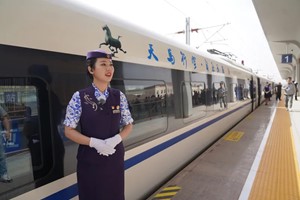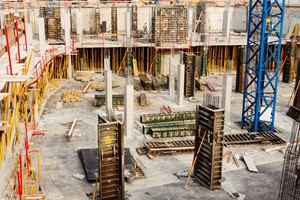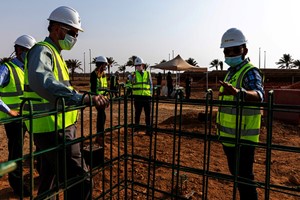China recently launched a new section of its high-speed rail (HSR) in the northwestern province of Gansu, connecting the provincial capital Lanzhou to the city of Wuwei. This new section, spanning 193 kilometers and incorporating six stations, will feature trains operating at a maximum speed of 250 km per hour. It forms part of a larger railway extending from Lanzhou to Urumqi, the capital of Xinjiang, making it the longest railway in the northwest region and the sole connection between the Xinjiang Autonomous Region and the rest of China. This route runs along the historic Hexi Corridor, a significant segment of the Ancient Silk Road.
This new railway line signifies the achievement of China's HSR construction targets set for 2030. As reported by China's State Council earlier this year, the nation already boasts 45,000 km of high-speed rail. The ambitious project commenced in 2004 with the creation of the Medium and Long-Term Railway Network Plan, which aimed to align the country's transportation capacity with its economic and social development needs. The plan, revised in 2016, set forth various goals that have now been met ahead of schedule.
The HSR network, designed as “eight vertical and eight horizontal” routes, aimed to double the previous network to enhance connectivity between the northern and southern regions, as well as the eastern and western parts of China. Another objective of the plan was to link all cities with populations exceeding 500,000. According to the latest census, China has 105 cities with more than 1 million inhabitants.
In a study by the Asian Development Bank, transportation expert Manmohan Parkash attributed the success of these projects to China's disciplined and skilled workforce, which supports the management team in implementing new techniques, work practices, and efficiency measures. Parkash noted, “the provision of low-cost, long-distance transportation services for passengers and goods should be the main contribution of railroads to the country's economic development.”
The new line inaugurated in Gansu has significantly enhanced the region's transportation capabilities, boosting passenger transport capacity and freeing up lines for goods transportation, according to Wang Dalin, an official with China Railway Lanzhou. He stated, “[The railroad] Lanzhou-Urumqi played a vital role in rural revitalization, the construction of the Belt and Road Initiative, and the opening up of the China-Europe rail connection.”
One of the newly established stations is in Tianzhu, a Tibetan-majority county primarily engaged in agriculture, livestock farming, and tourism. Hao Yuqin, from the Tianzhu Cultural Tourism Company, expressed optimism about the new station's potential to market the county's agricultural products, such as yak meat.
The development of China's high-speed rail network is also seen as a crucial component of rural revitalization, continuing the country's efforts to eradicate extreme poverty. New HSR stations in rural areas are expected to stimulate local tourism, encourage the growth of small businesses, and create job opportunities, thereby curbing internal migration in search of better prospects. Hao Yuqin remarked, “The opening of our HSR has also played a big role in developing our economy and the tourism industry in Tianzhu County. [...] Thus, we welcome everyone to our county to know some of our products.”
By Mauro Ramos














